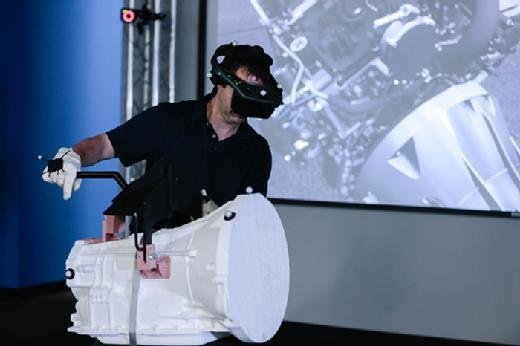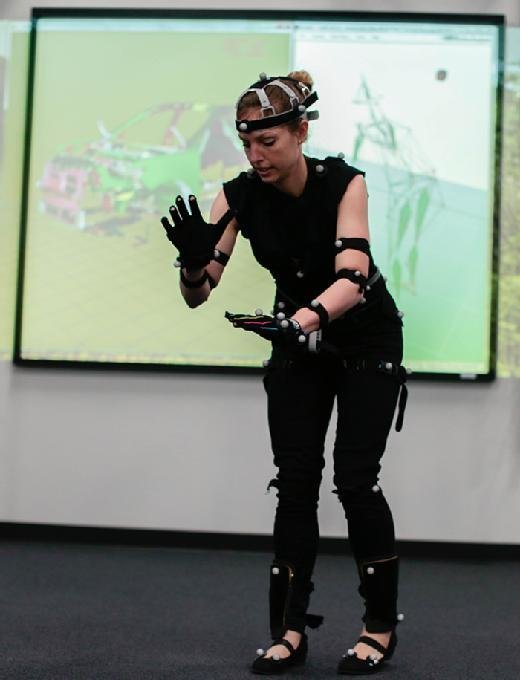
Ford reduces injuries with virtual assembly programme
Ford is using computer-aided design to help reduce cases of productivity-sapping musculoskeletal disorders caused by the labour process
Employee injury reduces productivity and costs the UK economy billions of pounds each year, but Ford Motor Company has developed a new system for its development phase that reduces this by 70%.
In 2014, the Health and Safety Executive (HSE) estimated that 28.2 million working days were lost through employee injury during the 2013/14 financial year, costing the UK economy £14.2bn. Over 40% of work-related injuries were due to musculoskeletal disorders, such as repetitive strain injuries (RSI), with two-thirds of these injuries being ongoing cases.
Jenny Skeldon, an HM inspector of health and safety for the HSE, explains that RSI and manual-handling injuries are a significant health issue in UK industry. “A lot of the work carried out involves repeated activities, which could lead to musculoskeletal disorders,” she says.
Musculoskeletal disorders are injuries that affect muscles, nerves and the blood system, and can cause specific problems such as carpal tunnel syndrome. These injuries are a major cause of lost productivity in the workplace, as well as one of the main reasons for long-term absence in England and Wales.
The main causes of musculoskeletal disorders are activities that are repetitive or involve awkward postures, heavy lifting or physical strain. Musculoskeletal disorders can range from mild to severe, are cumulative in nature and can affect, in particular, the arms, neck, shoulders, lower back or ankles.
It is in the construction and heavy industry sectors where most of these injuries occur, due to the intensely physical, and often repetitious, nature of the work. Conventionally, companies in these sectors often have a health and safety officer to oversee the processes and ensure workers are not being exposed to unnecessary risk. These representatives identify areas of concern and seek to mitigate these risks, for example by modifying processes or by alternating repetitive procedures.
Read more about computer-aided design
- What is computer-aided design, or CAD?
- German vehicle maker Daimler standardises computer-aided design for its worldwide vehicle development on Siemens NX software.
“Musculoskeletal disorders affect the whole of UK industry – every manufacturer and every company – because there will be repetitive tasks being undertaken in whatever workplace,” says Skeldon.
To ensure they comply with legislation, employers must ensure the health, safety and welfare of their employees. This means that not only must employers to assess and mitigate the risks in the workplace, but they must identify emerging risks as well.
Ford’s virtual assembly programme
One company that is taking this idea to a new level is the Ford Motor Company, which has developed a virtual assembly task assessment programme to validate whether its proposed car designs can be efficiently and ergonomically assembled, with only minimal risk of injury to employees.
For the past 10 years, during which Ford has designed more than 100 new vehicles, the company has been using 3D computer-aided design (CAD) models to not only assess the ergonomic and aerodynamic nature of new vehicles, but to study how easy they would be for its 50,000 production employees to assemble.
These assembly assessments are conducted throughout the design process for each new vehicle. Assessments often comprise virtual reality models of the cars, full-body motion capture of employees and 3D printing of individual components.
“They are designing out the human-repetitive movements,” observes Skeldon.
Many of the virtual assembly task assessments are conducted via virtual reality. Since cars are now designed using various forms of 3D CAD software, it is comparatively simple to convert them into the appropriate file format for virtual reality engines. In this case, Ford uses headsets by NVis to visualise the models.

Ford chose to use Autodesk’s VRed software for creating its visualisations, as it can take relatively lightweight data and make it appear realistic through the application of materials, textures and ambient occlusions (shadows).
“There are other applications out there that can perform this, but VRed is really optimised for automotive visualisation,” says Marty Smets, an Ergonomics Simulation Engineer at Ford. “It also has built-in functionality to receive motion capture data, allowing us to immerse our engineers directly into the data in virtual reality.”
Motion capture to prevent strain
Full-body motion capture systems are used in conjunction with the virtual reality software to provide further information on how the employee moves their body to fit the virtual parts. More than 50 motion capture markers are placed on their arms, legs, back and torso, allowing ergonomists to assess the joint and muscle strain in Cortex by Motion Analysis, as well as identifying any positions where employees could lose their balance during future assembly processes.
As vehicles are assembled, operators use their hands to apply forces to the parts they are connecting to the car. Motion capture allows Ford to track the whole body posture of an employee as they perform simulated future work tasks in their lab.

These joint angles are captured and fed into a biomechanical model that calculates how much force someone can safely generate in a specific posture. They can then relay this information to the engineer who designs this particular part, so that they can ensure it will connect with the appropriate amount of force.
“This will not only protect the worker from injury, but help to ensure that all parts will be properly connected, which helps drive quality,” says Smets.
3D printing tests hand clearance
Finally, 3D printing is used to create mock models of the proposed engine, allowing ergonomists to verify that there will be sufficient hand clearance for the assembly workers to adequately assemble the future engine.
3D printing is used to validate any potential hand clearance concerns. As Ford integrates new technologies into its vehicles, space increasingly becomes a premium. This also raises the potential for hand clearance to become an issue during assembly. As Ford identifies areas of concern during the design process, it employs 3D printing to create a physical prototype of the space.
“That way our decision-makers can put their hands in ‘real’ product to decide if a change is necessary or not,” says Smets.
Using virtual reality to run assembly assessments
Engineers at Ford also use the ambient occlusions ability of VRed to assess whether their assembly workers will be able to actually see the parts that they are assembling.
These assessments take place throughout the entire design process of new cars, with a month set aside midway through product design for a thorough assembly assessment to take place.
While the exact duration of each simulation depends on the type that is used, nominally it can be done in less than a single working day. Despite the high initial investment costs for the equipment, using it only costs engineering hours.

“Most manufacturers are using digital human models in some fashion but I'm not sure if others are using motion capture or VR in the same way we are”
Marty Smets, Ford
“In the lab, it will take about 15 minutes to put markers on a person, an hour to calibrate and refine the tracking and another couple of hours after the data has been gathered to make sense of it and provide an output to our internal engineering community,” says Smets.
The results of these assessments are then fed back into the design cycle of the new car, allowing the designers to revise their models accordingly, removing any assembly issues before they become a problem.
As well as examining the assembly process of proposed car designs, Ford has performed studies into future assembly plants. In these simulations, Ford immersed engineers in proposed factory layouts, allowing ergonomists to evaluate the layout of employee work cells.
“This has been particularly helpful in situations where operators need to stand at a control station and monitor robots,” says Smets. “Using immersive VR [virtual reality] in these applications can ensure things like clear line-of-sight to the robot.”
Measuring success
Since Ford began using the system 10 years ago – working on more than 100 new vehicles, including the 2015 Ford Mustang and 2016 Ford Explorer – it has reduced employee injury by 70%. The manufacturer has also managed to reduce ergonomic issues of assembly and maintenance by 90%.
Preventing musculoskeletal injuries is more about cost avoidance than cost saving. However, when an employee injures themselves at work it can be costly to a company in terms of manpower hours lost and possible insurance claims.
“Our statistics show that we’ve reduced the number of days away due to ergonomic concerns by 75% in our assembly plants,” says Smets. Not only does this make Ford a more productive company and a better employer, but this forward-thinking approach to safety has to be good for employee morale.
The success of the method that Ford has used for the past 10 years speaks for itself. However, this is only a single case, albeit one with more than 100 production cycles. How it compares to safety improvement programmes in other companies remains to be seen. The HSE’s Skeldon has certainly not heard of this approach before.
As Ford’s Smets concludes: “Most manufacturers are using digital human models in some fashion but I’m not sure if others are using motion capture or VR in the same way we are.”











